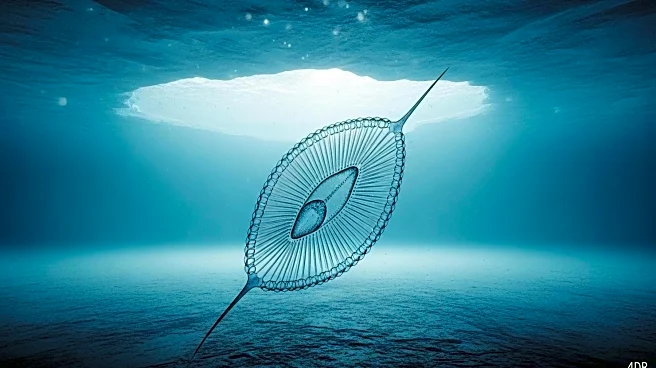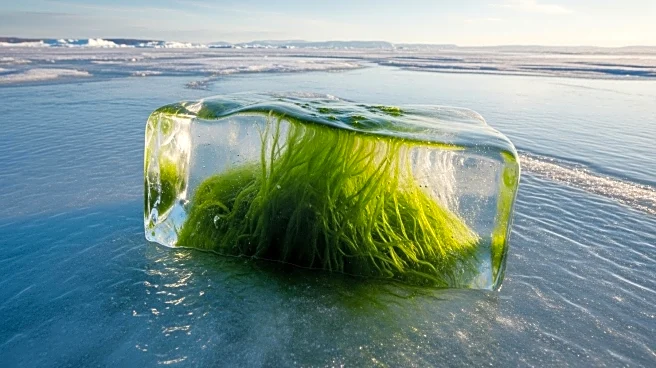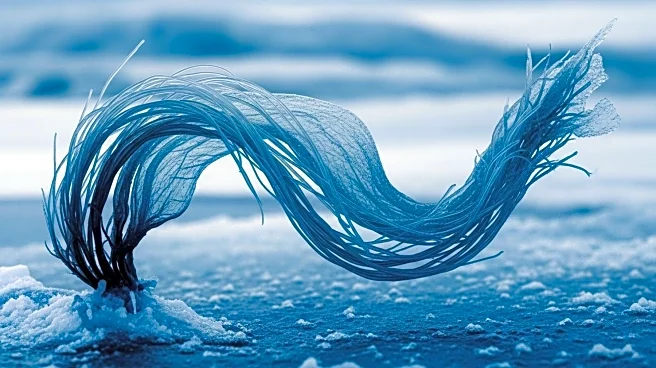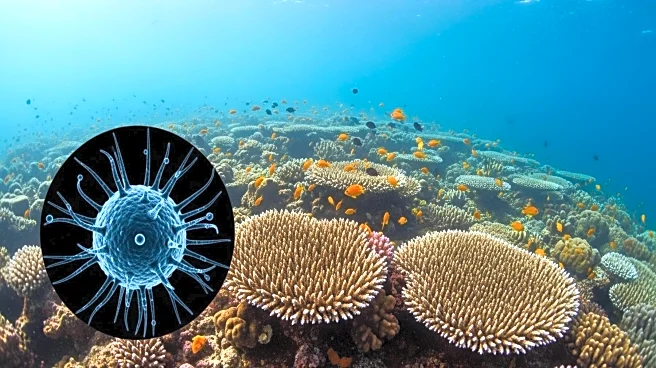What's Happening?
Stanford researchers have discovered that diatoms, single-celled algae found beneath Arctic ice, are not dormant but actively gliding at temperatures as low as -15 C. This finding, published in the Proceedings of the National Academy of Sciences, challenges previous assumptions about the limits of life in extreme conditions. The diatoms use a combination of mucus and molecular motors to move, a mechanism similar to human muscle movements. The research was conducted during a 45-day Arctic expedition, where ice cores were collected and analyzed to understand the diatoms' behavior and their potential impact on the Arctic ecosystem.
Why It's Important?
The discovery of active diatoms beneath Arctic ice has significant implications for understanding life in extreme environments and the Arctic ecosystem. These diatoms could play a crucial role in the food web, potentially affecting the distribution of resources and the formation of ice. As climate change continues to impact polar regions, understanding these organisms' adaptability and ecological roles becomes increasingly important. This research highlights the need for continued exploration and study of Arctic ecosystems, especially in light of potential funding cuts to polar research.












